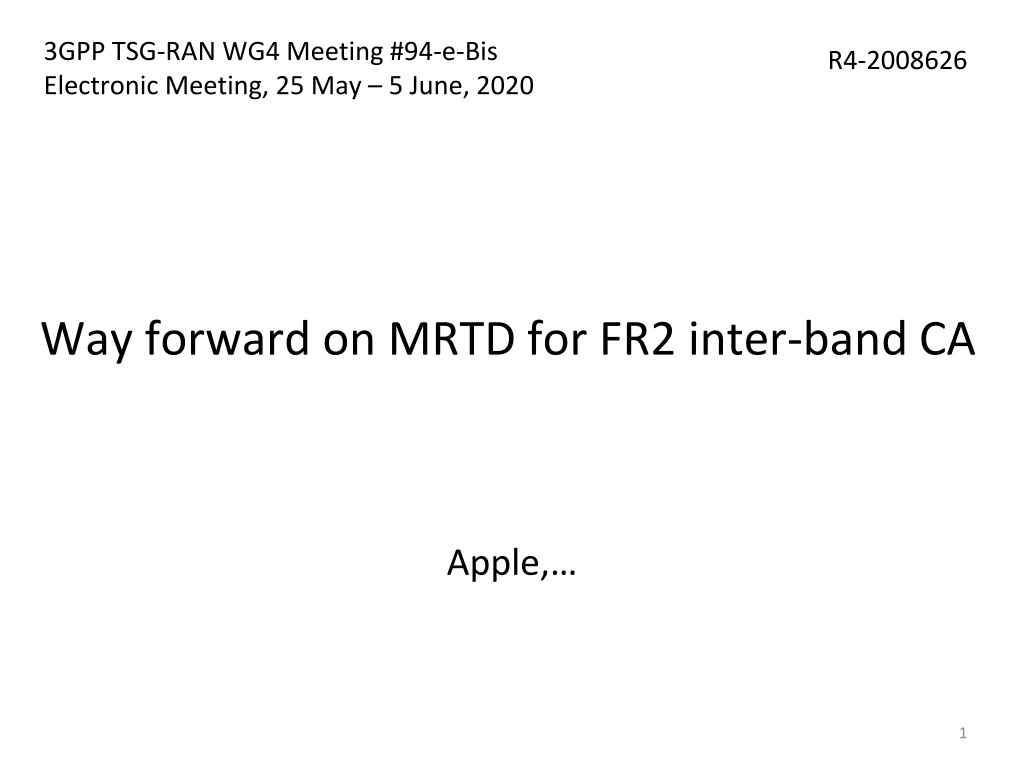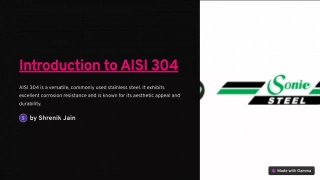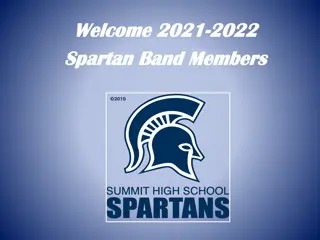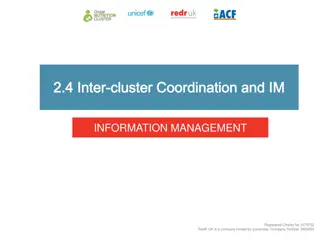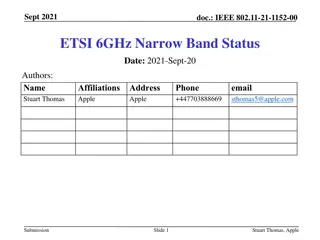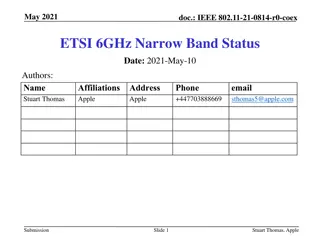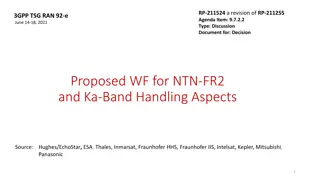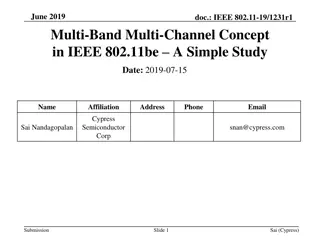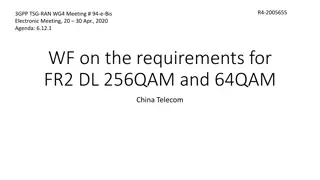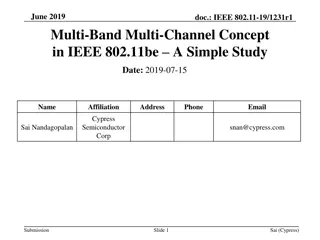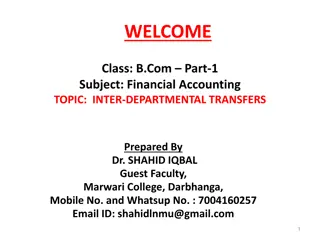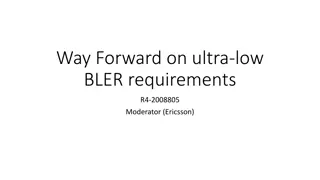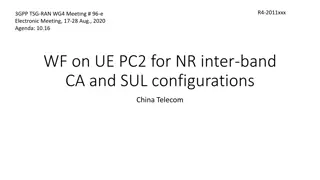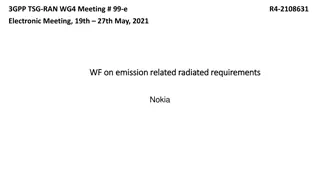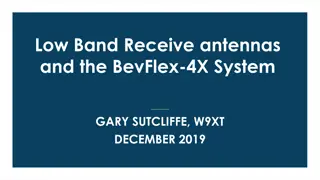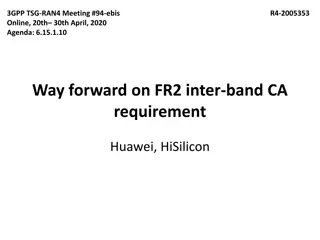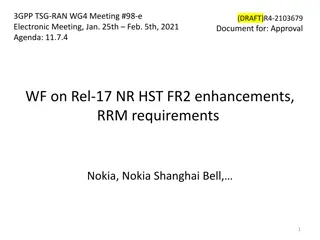Way Forward on MRTD for FR2 Inter-Band CA
Summary of decisions and discussions from the 3GPP TSG RAN WG4 Meeting #94-e-Bis regarding MRTD for common and independent beam management in RF sessions, including proposed options for MRTD requirements in CBM and IBM scenarios.
Download Presentation

Please find below an Image/Link to download the presentation.
The content on the website is provided AS IS for your information and personal use only. It may not be sold, licensed, or shared on other websites without obtaining consent from the author.If you encounter any issues during the download, it is possible that the publisher has removed the file from their server.
You are allowed to download the files provided on this website for personal or commercial use, subject to the condition that they are used lawfully. All files are the property of their respective owners.
The content on the website is provided AS IS for your information and personal use only. It may not be sold, licensed, or shared on other websites without obtaining consent from the author.
E N D
Presentation Transcript
3GPP TSG-RAN WG4 Meeting #94-e-Bis Electronic Meeting, 25 May 5 June, 2020 R4-2008626 Way forward on MRTD for FR2 inter-band CA Apple, 1
Background In RAN4#94e-bis, agreed WF can be summarized as Continue discussing the definition and applicable band combinations of common and independent beam management in RF session Investigate if there are other solutions than strict timing requirement for tackling the impacts due to UE beam management implementation Decision on MRTD for common beam management will be pending on the assumptions of common beam management defined in RF session MRTD for independent beam management will be decided by RAN4#95e based on majority view. Subject to the decision on MRTD for independent beam management, the FR2 MRTD defined in Table 7.6.4-2: Maximum receive timing difference requirement for inter-band NR carrier aggregation in TS38.133 at least can be applied for independent beam management. It is FFS for common beam management. In RAN4#95e, the 1st round discussion is summarized in R4-2008510 2
WF on FR2 inter-band CA On MRTD for CBM (strive to down select between option 1 and 2 by the end of RAN4#95e) Option 1: At least 260ns MRTD is feasible for CBM from UE perspective Further study feasibility to support up to 3us MRTD under assumption of co-located deployment in terms of impact on performance (e.g. possible scheduling restrictions) E.g. potential performance degradation and other WG impact due to MRTD larger than a threshold (e.g. 260ns) should be studied It is FFS the study should be done within Rel-16 timeframe or in Rel-17 Option 2: Do not define CBM RRM requirements in Rel-16 if no consensus can be made by [RAN4#95e or RAN4#96e] 3
WF on FR2 inter-band CA On MRTD for IBM Keep existing requirement, i.e. 8us, unchanged Revision of Table 7.6.4-2: Maximum receive timing difference requirement for inter-band NR carrier aggregation in TS38.133 for both R15 and R16 (depending on the conclusion of MRTD for CBM, strive to down select between option 1 and 2 by the end of RAN4#95e) Option 1: clarify 8us MRTD only applies to IBM. (CR from Apple) That means new MRTD should be specified for CBM Option 2: clarify new MRTD, if introduced, only applies to CBM That means existing 8us MRTD may also apply to CBM (CR from Ericsson) MRTD = 8 s, but an MRTD = 3 s is applicable for UE which is only capable of common beam management for a band combination where common beam management is possible. The UE may, assume collocated site, in this case (CR R4-2007096). Proponent of this option still needs to clarify the applicability of MRTD=8us, e.g. to IBM only or both IBM and CBM MRTD = 8 s applies when the conditions for MRTD = 3 s for CBM, as stated above, is not applicable, ie for IBM. 4
WF on FR2 inter-band CA On MTTD for CBM Option 1: no requirement specified Option 2: 3.5us Option 3: depends on MRTD On MTTD for IBM Option 1: 8.5us Option 2: depends on MRTD 5
